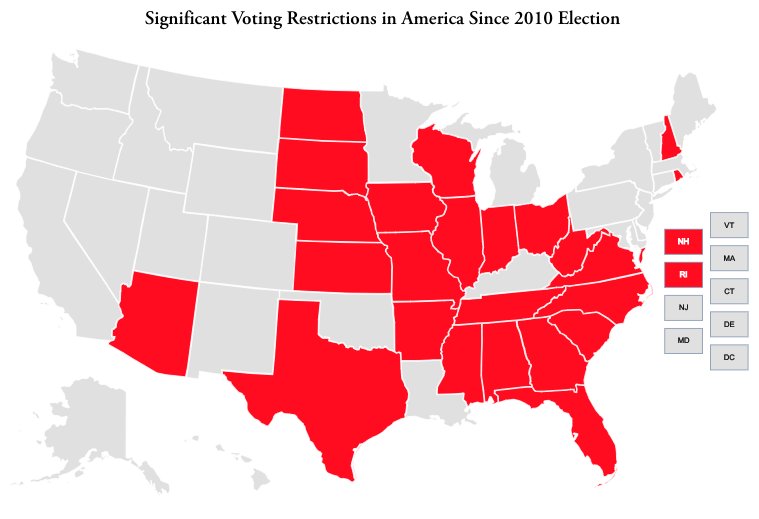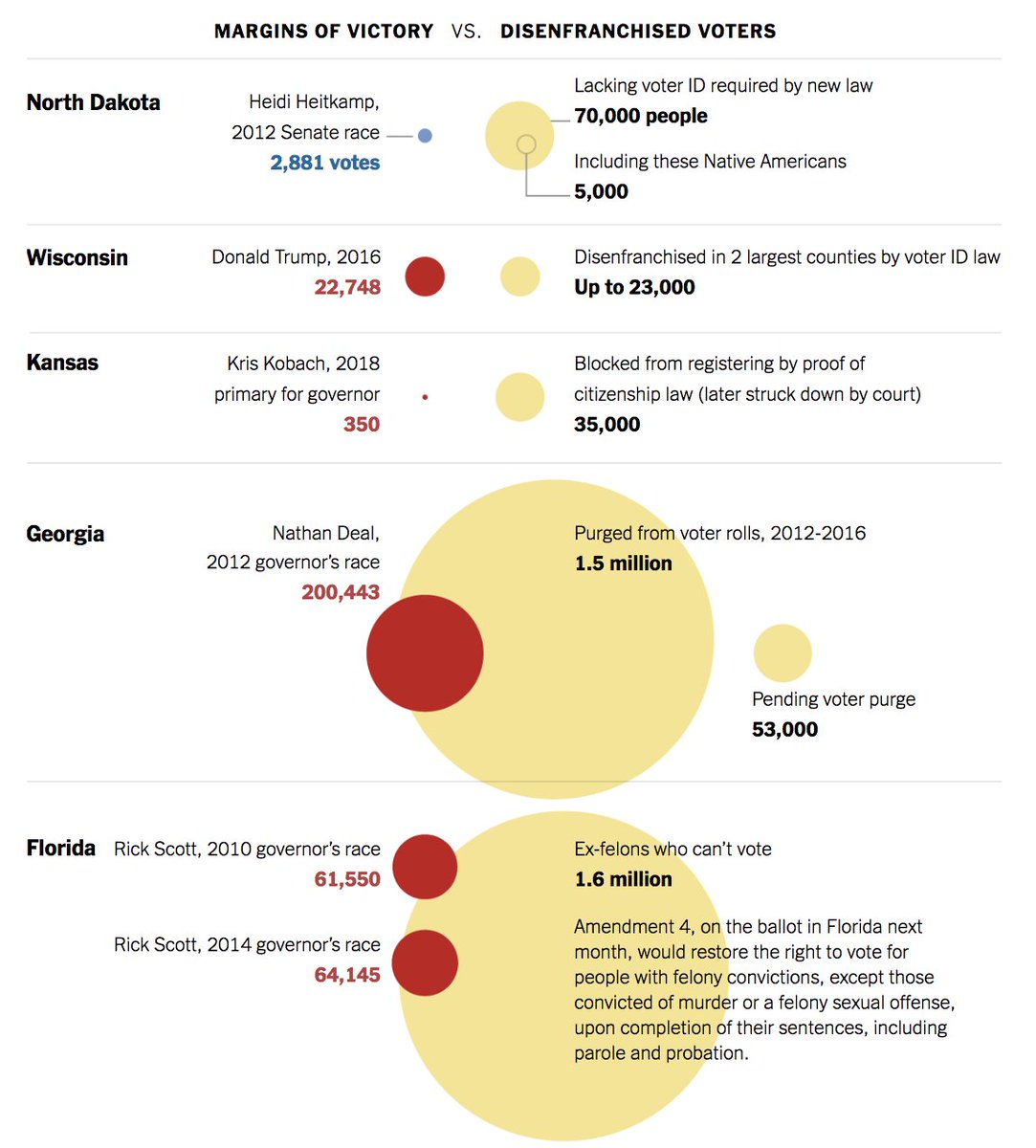#SundayMotivation
The Myth of the Lazy Nonvoter
nyti.ms/2CvoRaT
Here we look at voters who have no form of ID that shows name and address (such as a driver’s license, utility bill or bank statement) but who have voted at least once before in their state. First-time voters without an ID face especially daunting barriers:
Voter-registration deadlines can catch would-be voters by surprise. Here, we look at voters who have the required ID but put off getting registered until just three days
Many students face difficulties in meeting state ID requirements. A smaller proportion of students have a driver’s license today than in the 1980s, according to a study by the University of Michigan. Those attending school out of state may not have the
The Working-Parent Voter
Two out of every five people who most likely won’t vote next month are already registered and have the proper ID. Many of them face
The Convicted-Felon Voter
Many Americans who have been convicted of a felony but are now out of prison, on parole or on probation may want to vote, but many states have laws that expressly limit their
According to the Brennan Center for Justice, since 2010, at least 23 states have enacted laws restricting the ability to vote in some manner, including many states with competitive midterm races. These new laws limit early voting, make
Since the 2010 midterm election, 23 states have passed restrictions that make voting harder. They are color-coded by the majority of House representatives after the 2016 election. The Brennan Center estimates
In fact, they are right in front of us. Just as some states that have passed laws restricting access to voting in
~Sarah Jackel, Gen'l Counsel of Voter.Org, NYT, 10/7/18






